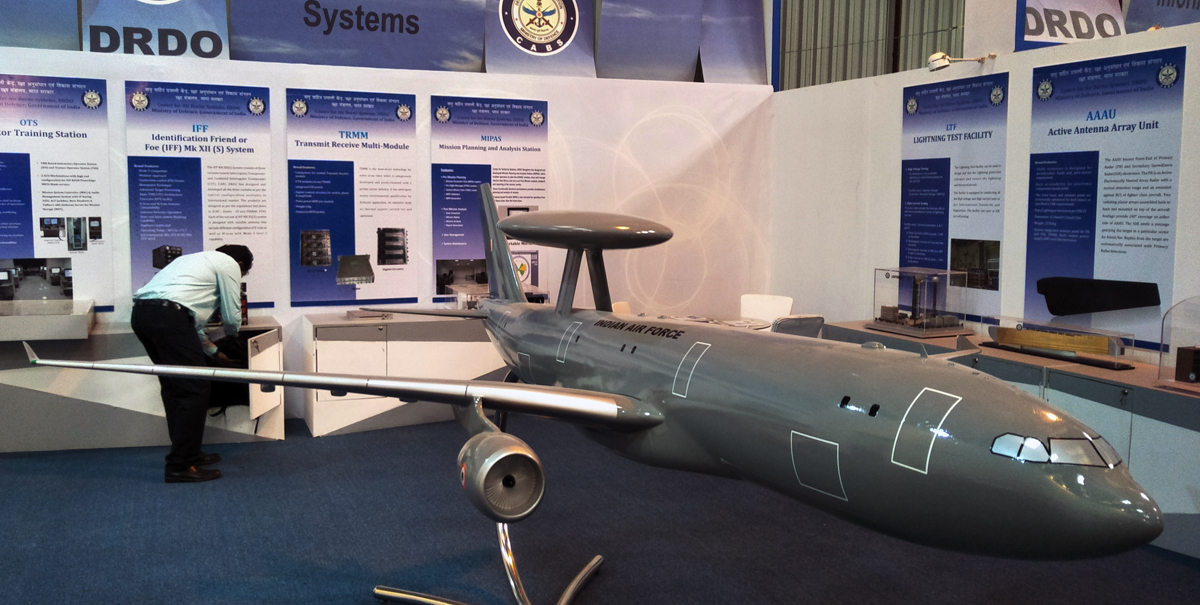sudhir007
SENIOR MEMBER

- Joined
- Jul 6, 2009
- Messages
- 4,728
- Reaction score
- 1
https://www.indiatoday.in/mail-toda...e-ministry-to-decide-today-1179154-2018-02-28
Seeking to boost indigenous defence capabilities, the defence ministry is expected to consider a proposal worth over Rs 20,000 crore on Wednesday to develop six 'eyes in the sky' Airborne Early Warning and Control System (AWACS) planes to monitor activities of rival air forces deep inside their territories.
"A DRDO proposal to develop six AWACS planes on the Airbus A-330 aircraft worth over Rs 20,000 crore is expected to come up for discussion at a high level meeting of the defence ministry under defence minister Nirmala Sitharaman," a government source told MAIL TODAY.
As per the plan, the DRDO would first develop the two aircraft from Airbus and modify them to fix radar over them which would give them the capability to conduct 360 degree snooping with a range of over 400 km in the sky, sources said.
This would be followed up by another four aircraft which would add to the two Airborne Early Warning and Control (AEWC) aircraft based on the Embraer aircraft.
The DRDO-developed aircraft would be in the league of the three Phalcon AWACS planes that India had acquired from Israel and Russia in a tripartite deal around 10 years ago for USD 1.1 billion (Rs 7,154 crore).
India had plans of acquiring two more such planes but the project has been put on the backburner as both countries have increased the price of the radar and the Ilsyushin-76 transport aircraft on which the radar is mounted by almost double.
The cost of the two planes has gone above USD 1.5 billion (Rs 9,755 crore) whereas the first three planes had been acquired a few years ago for USD 1.1 billion (Rs 7,154 crore).
The next-generation AWACS, with a 360-degree scan being developed by the DRDO, may also be developed as an air-to-air refueller.
The new system being developed by DRDO would have AESA (active electronically scanned array) radars with 360 degree capability, which can detect incoming aerial threats such as hostile fighters, drones and cruise missiles from 400 km away.
India will be only the second country in the world after Israel to develop such a system.
The AWACS being developed on the Airbus aircraft is far more advanced than the surveillance platform developed on the Embraer aircraft as it will provide 360 degree angle of coverage against the 240 degree angle of an AEWC plane. The DAC had earlier given approval to the DRDO's plan to develop two AWACS.
Seeking to boost indigenous defence capabilities, the defence ministry is expected to consider a proposal worth over Rs 20,000 crore on Wednesday to develop six 'eyes in the sky' Airborne Early Warning and Control System (AWACS) planes to monitor activities of rival air forces deep inside their territories.
"A DRDO proposal to develop six AWACS planes on the Airbus A-330 aircraft worth over Rs 20,000 crore is expected to come up for discussion at a high level meeting of the defence ministry under defence minister Nirmala Sitharaman," a government source told MAIL TODAY.
As per the plan, the DRDO would first develop the two aircraft from Airbus and modify them to fix radar over them which would give them the capability to conduct 360 degree snooping with a range of over 400 km in the sky, sources said.
This would be followed up by another four aircraft which would add to the two Airborne Early Warning and Control (AEWC) aircraft based on the Embraer aircraft.
The DRDO-developed aircraft would be in the league of the three Phalcon AWACS planes that India had acquired from Israel and Russia in a tripartite deal around 10 years ago for USD 1.1 billion (Rs 7,154 crore).
India had plans of acquiring two more such planes but the project has been put on the backburner as both countries have increased the price of the radar and the Ilsyushin-76 transport aircraft on which the radar is mounted by almost double.
The cost of the two planes has gone above USD 1.5 billion (Rs 9,755 crore) whereas the first three planes had been acquired a few years ago for USD 1.1 billion (Rs 7,154 crore).
The next-generation AWACS, with a 360-degree scan being developed by the DRDO, may also be developed as an air-to-air refueller.
The new system being developed by DRDO would have AESA (active electronically scanned array) radars with 360 degree capability, which can detect incoming aerial threats such as hostile fighters, drones and cruise missiles from 400 km away.
India will be only the second country in the world after Israel to develop such a system.
The AWACS being developed on the Airbus aircraft is far more advanced than the surveillance platform developed on the Embraer aircraft as it will provide 360 degree angle of coverage against the 240 degree angle of an AEWC plane. The DAC had earlier given approval to the DRDO's plan to develop two AWACS.





